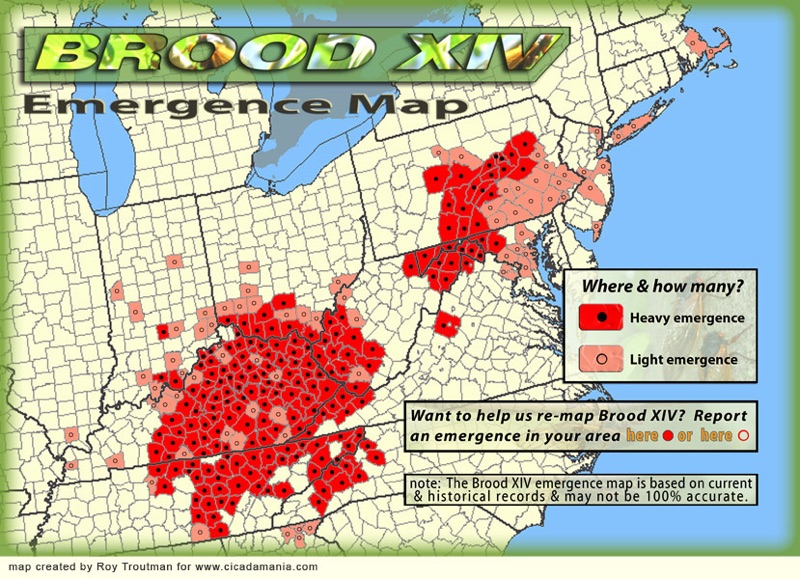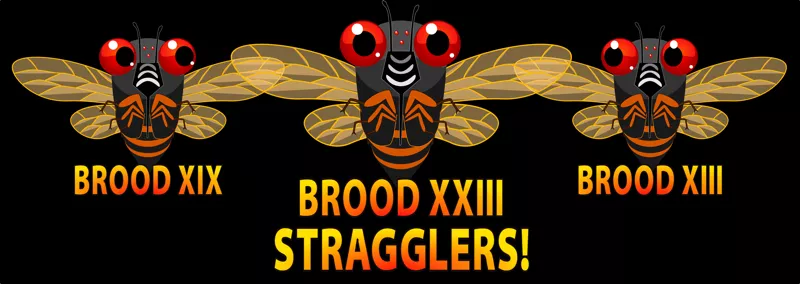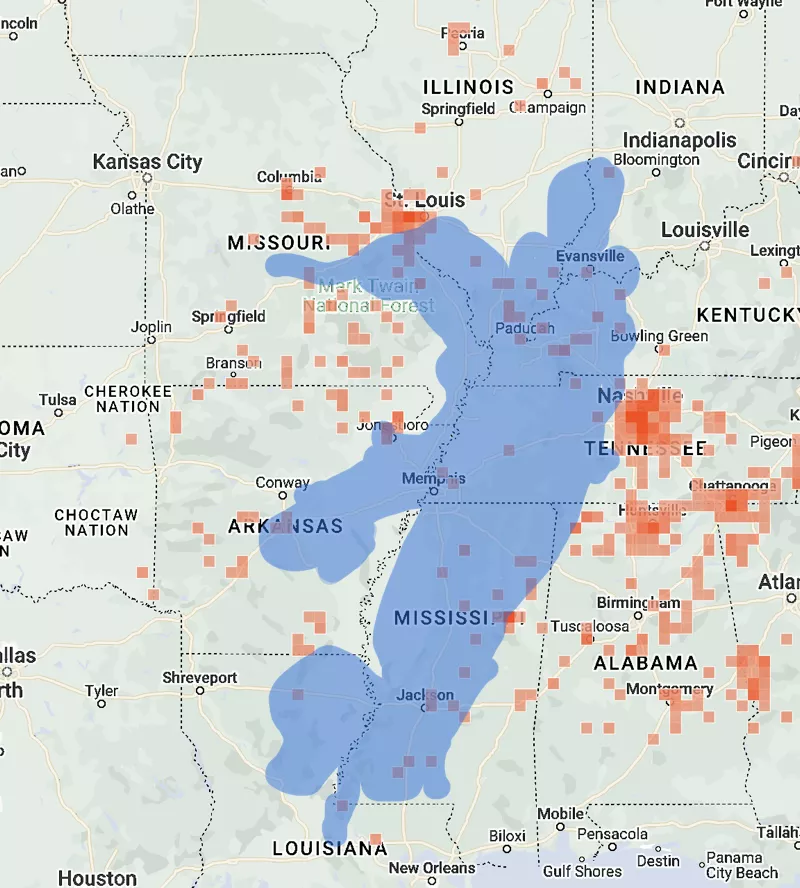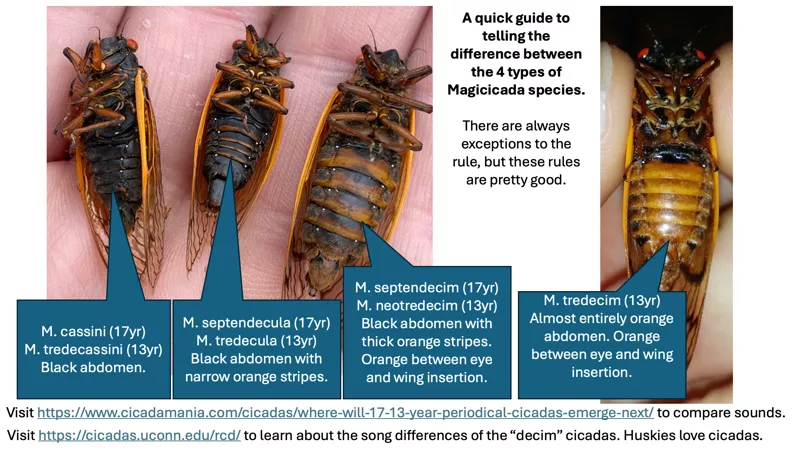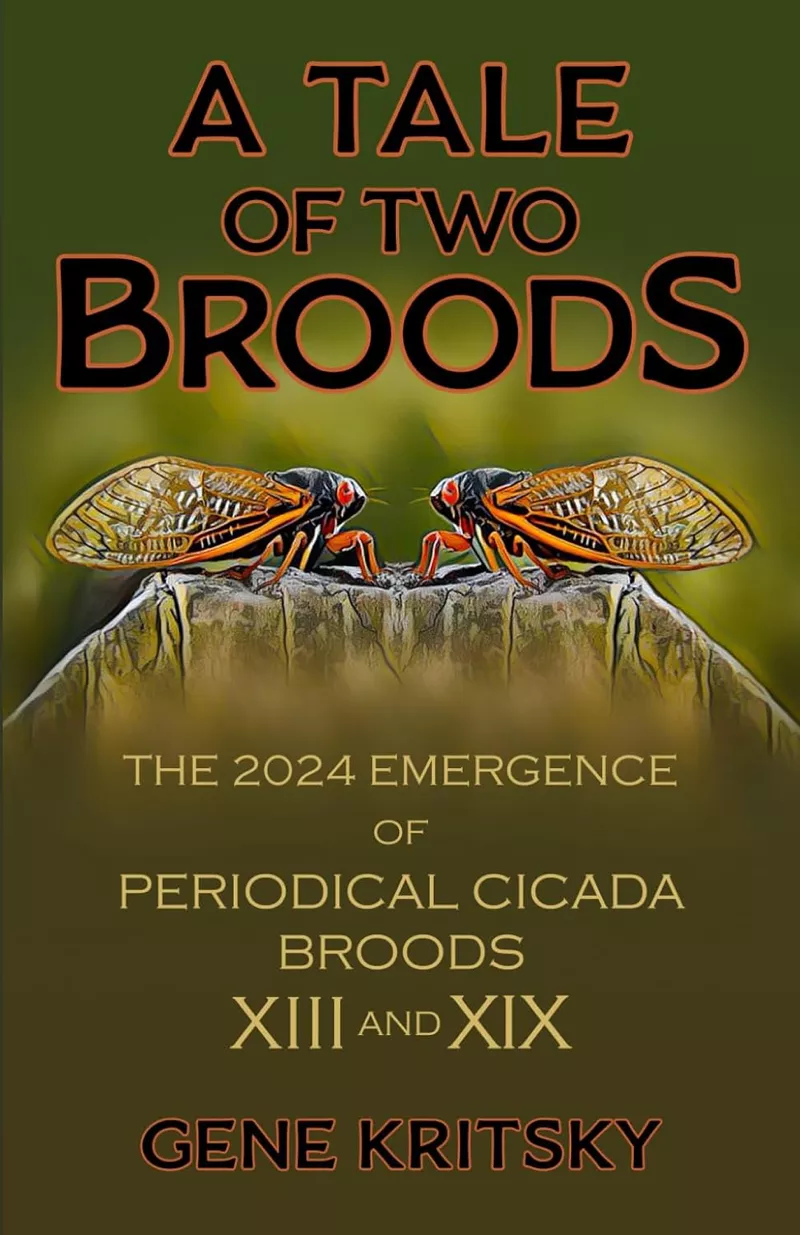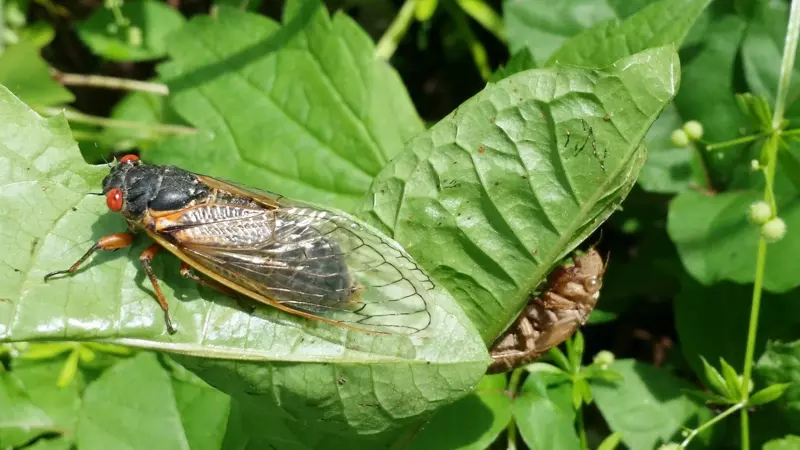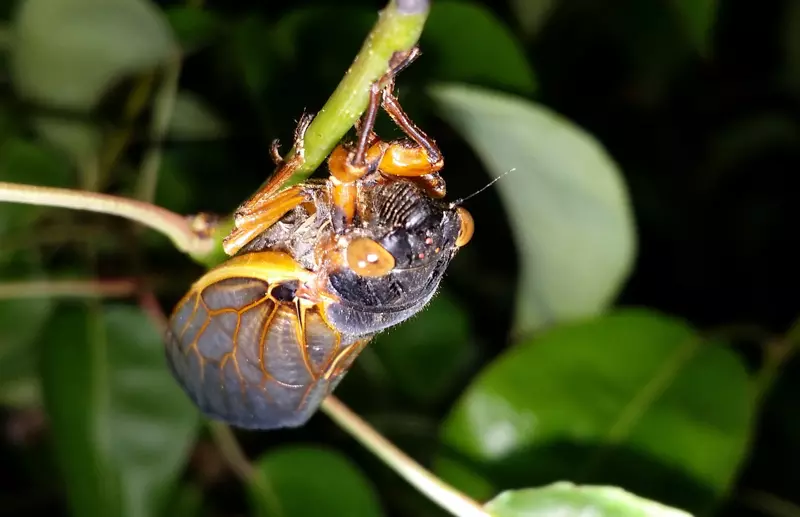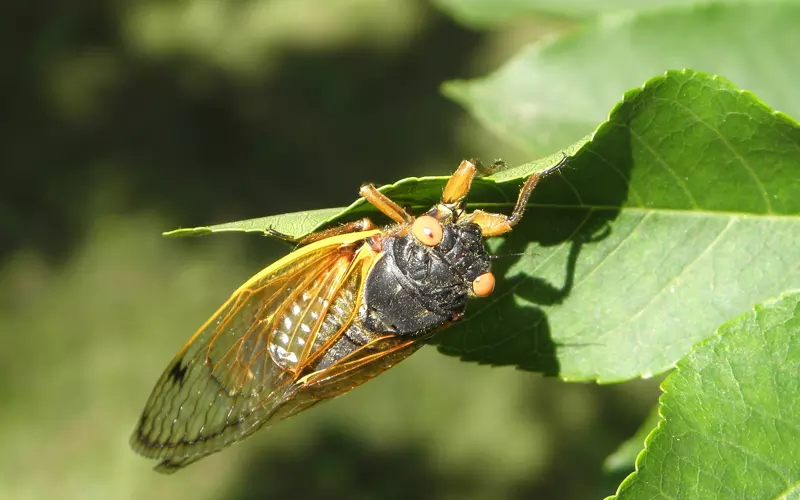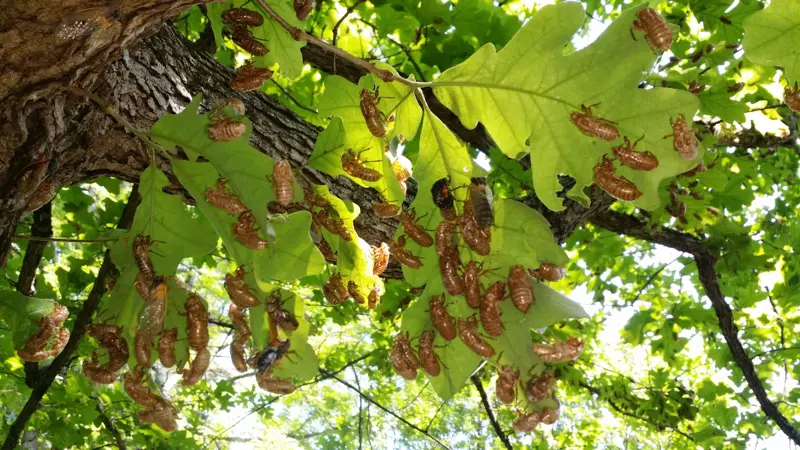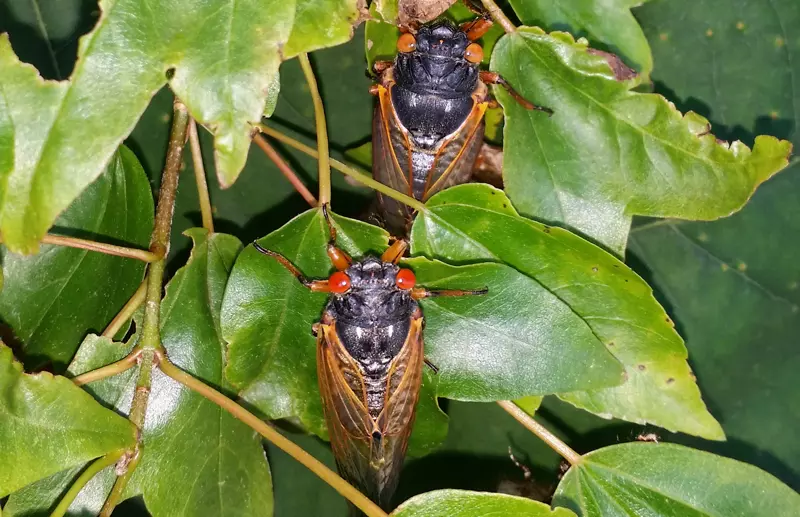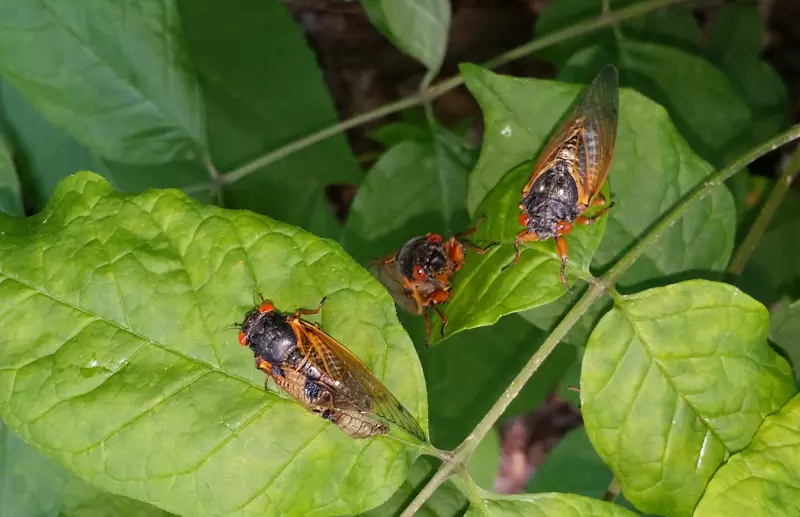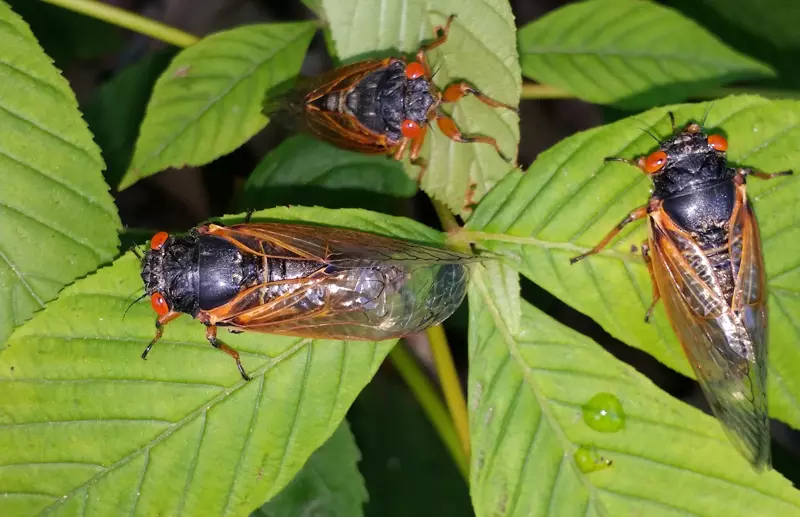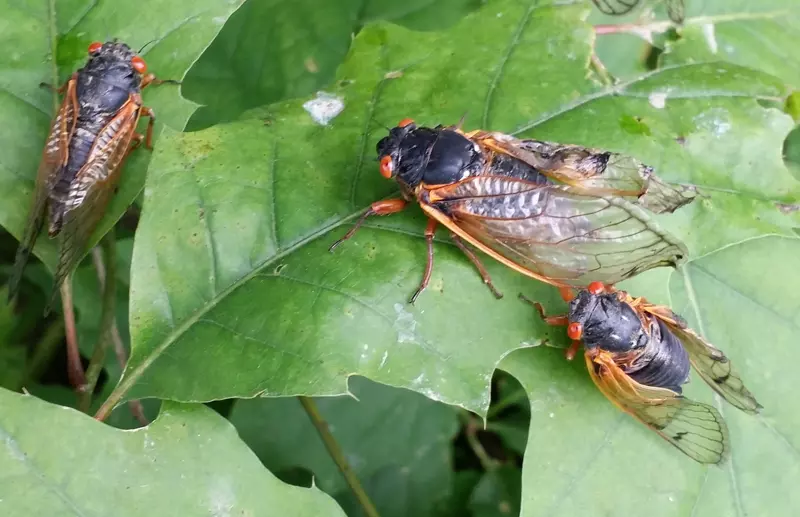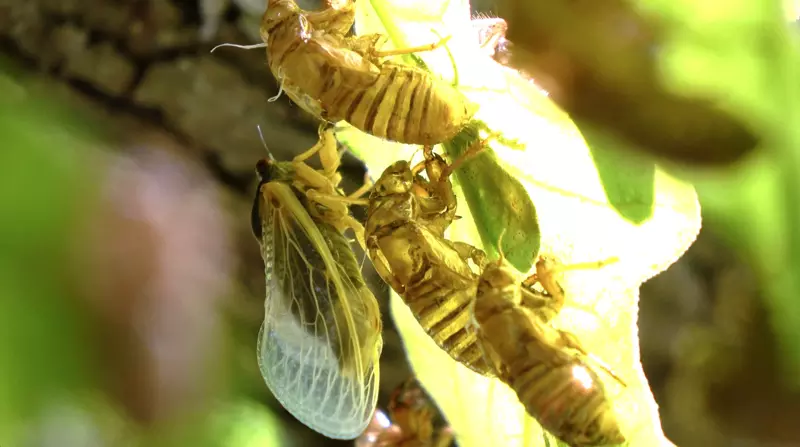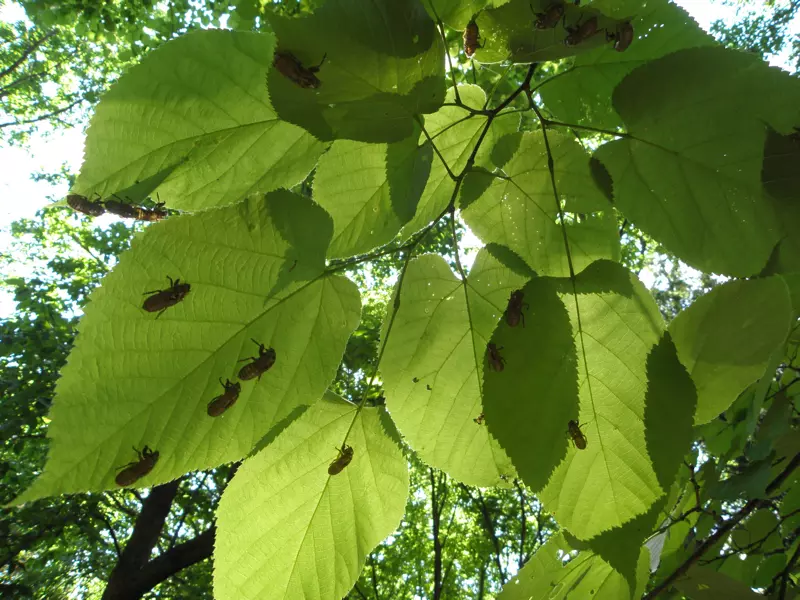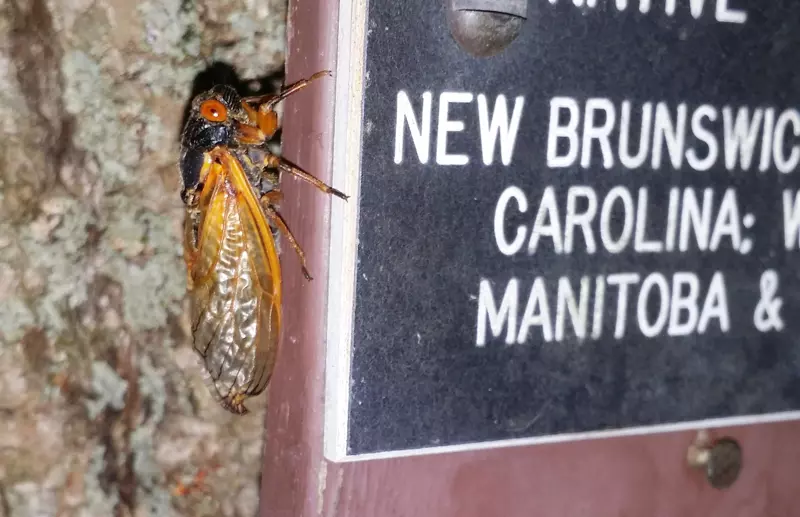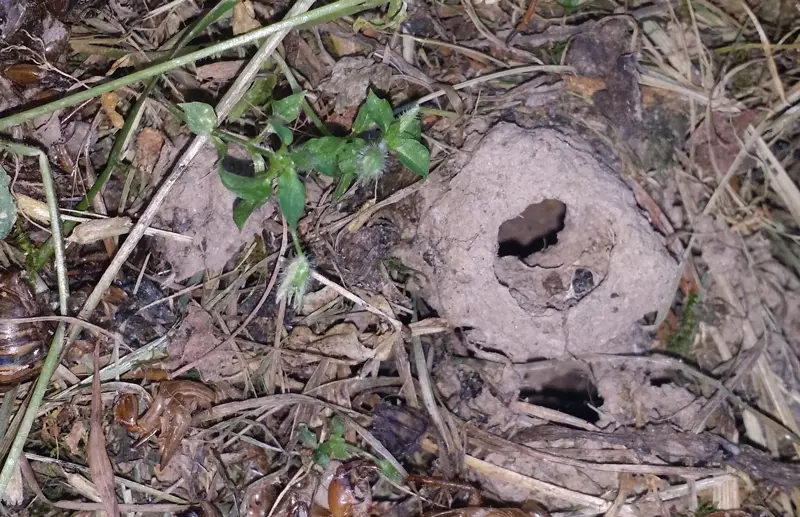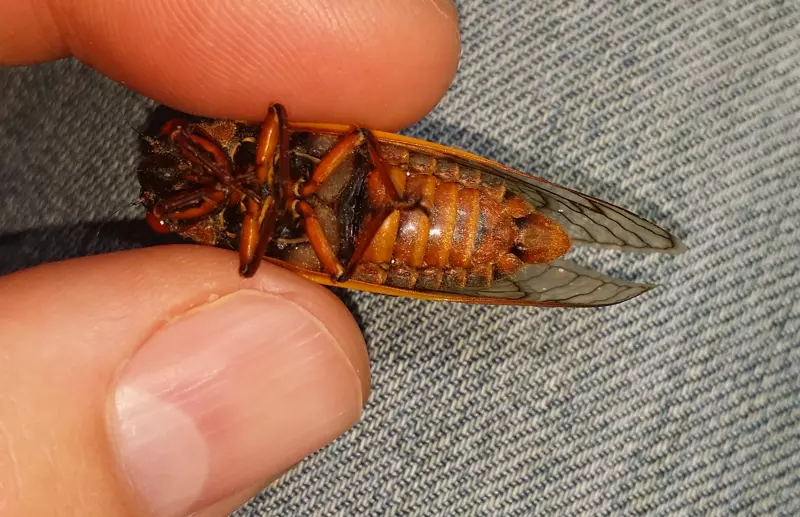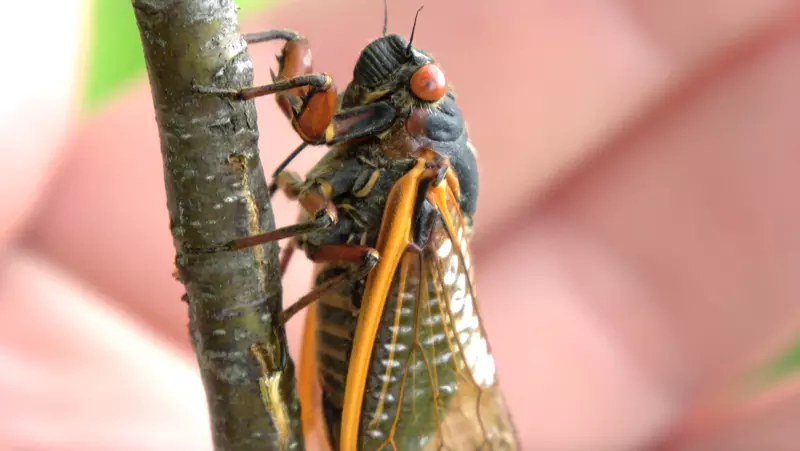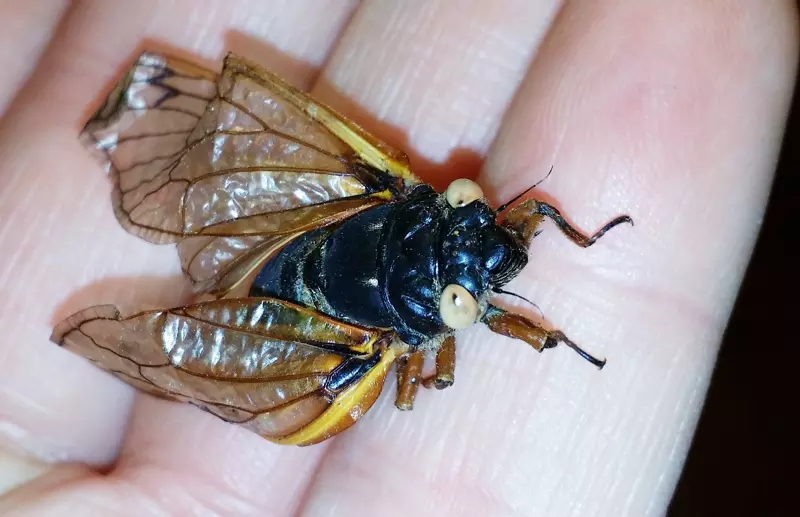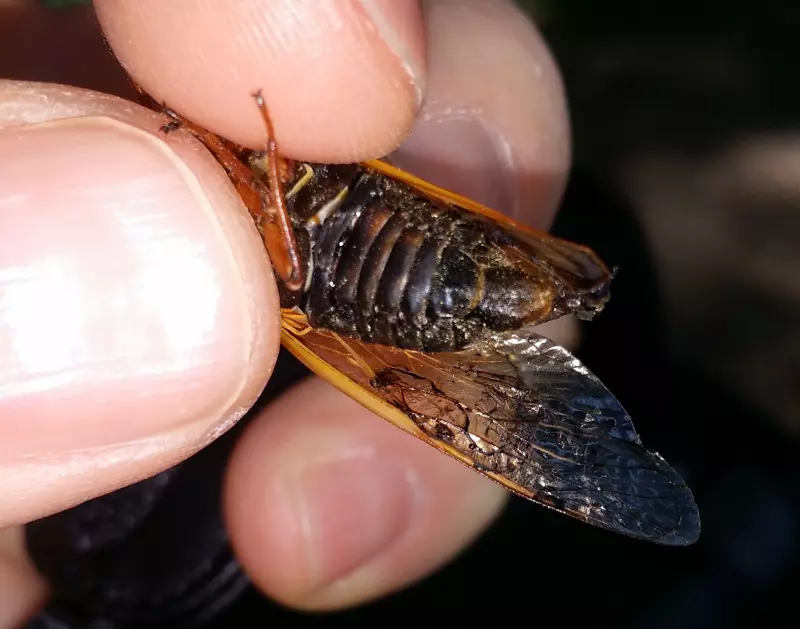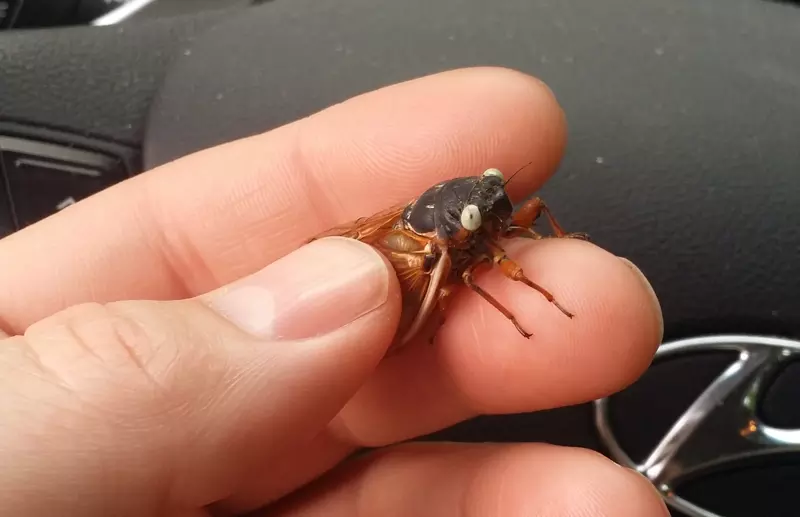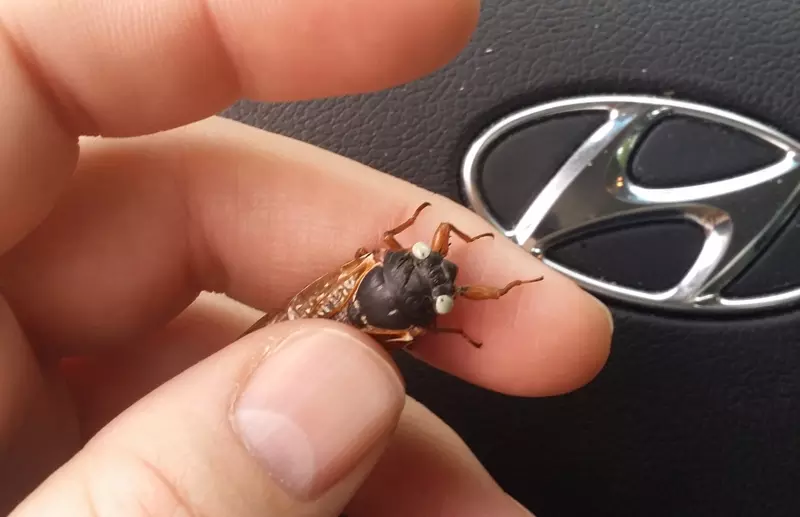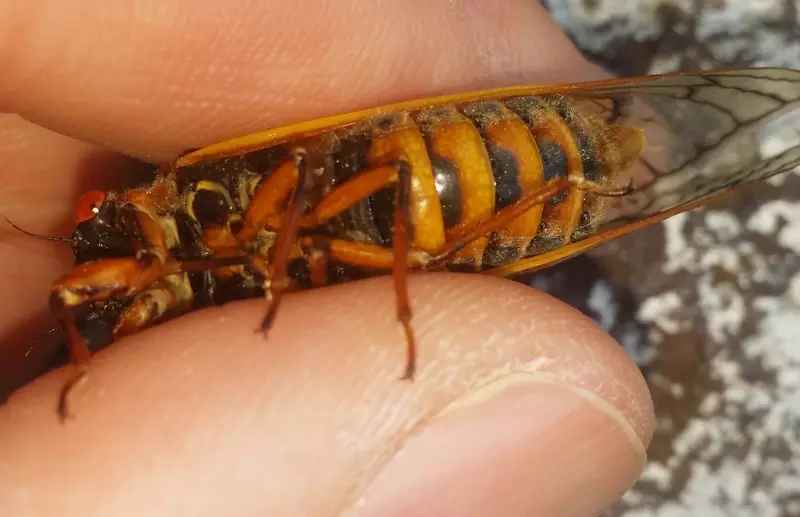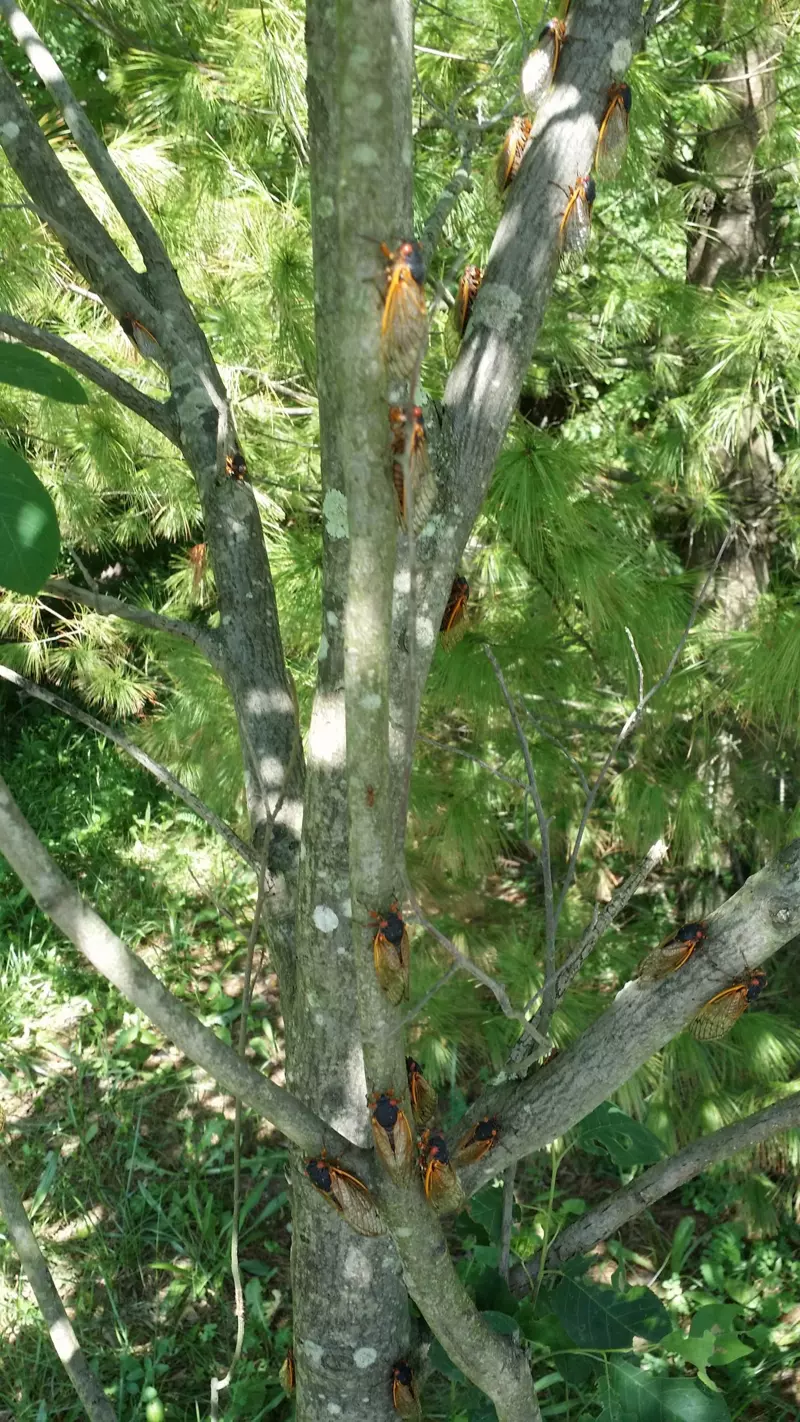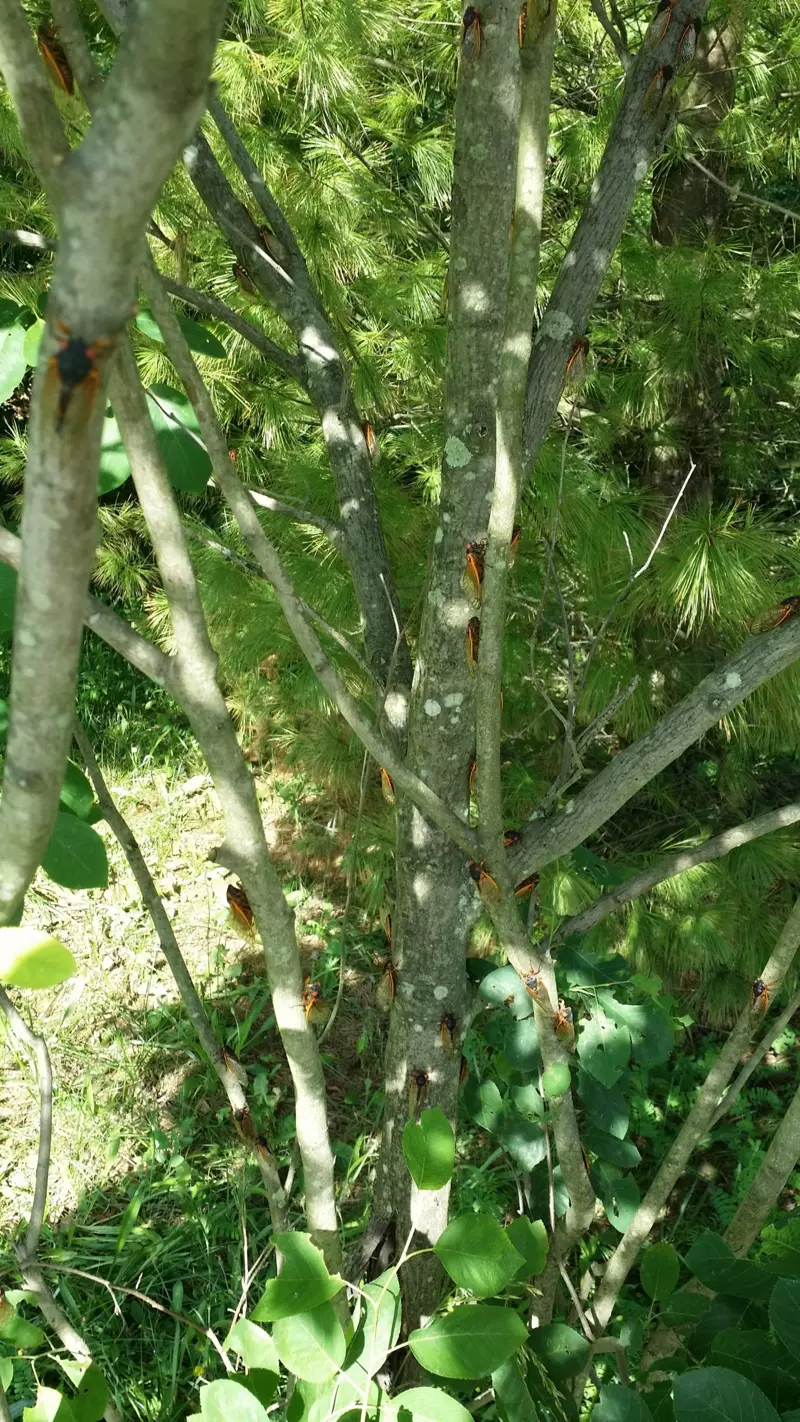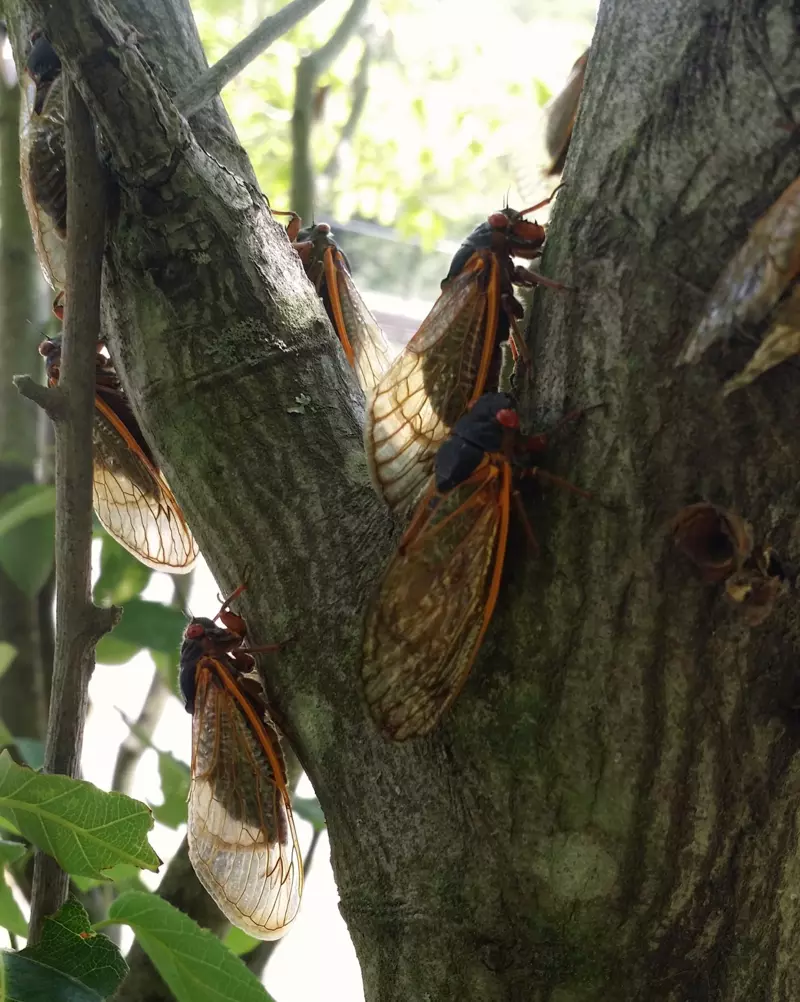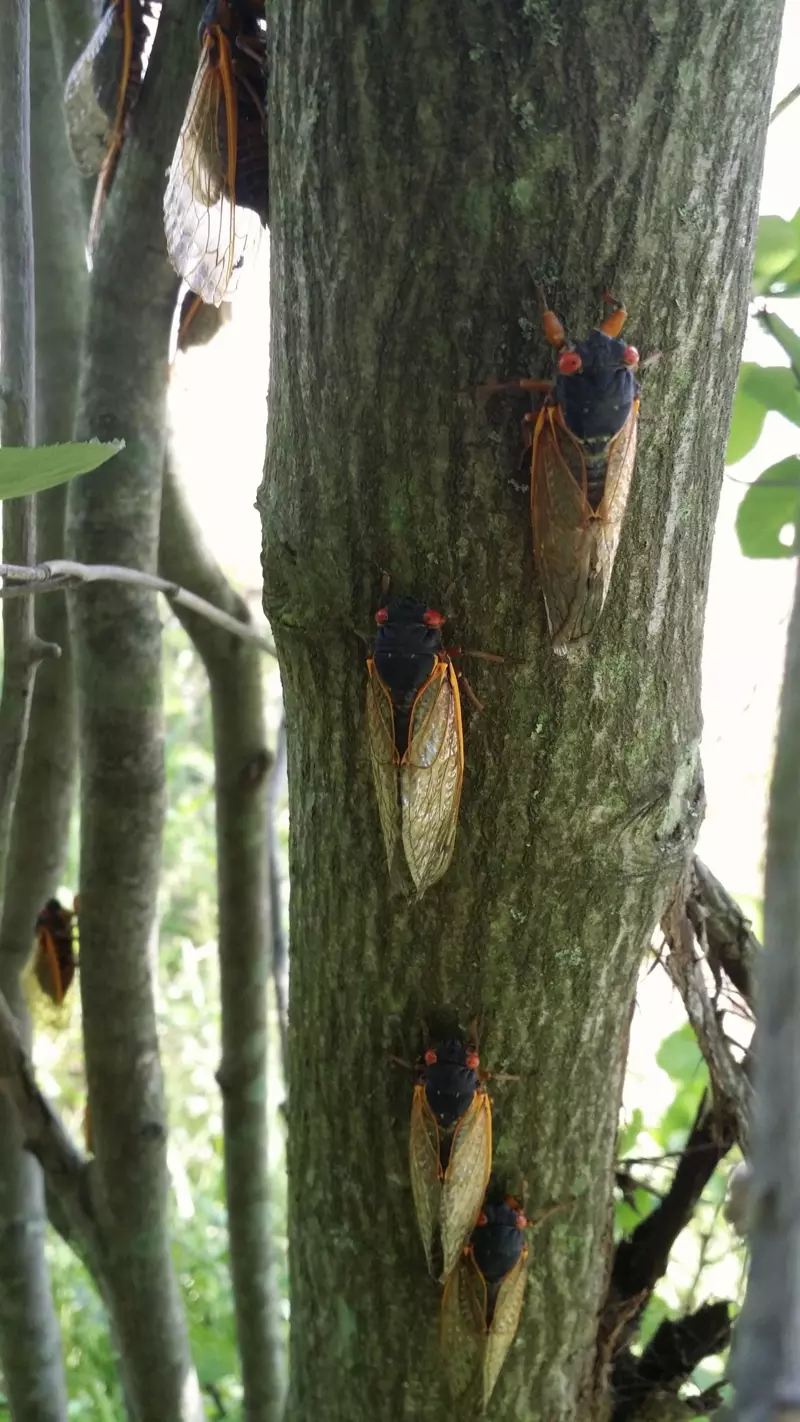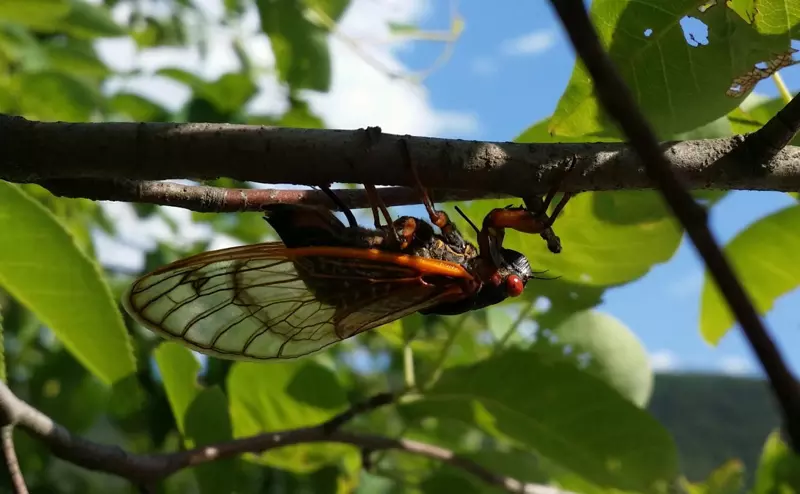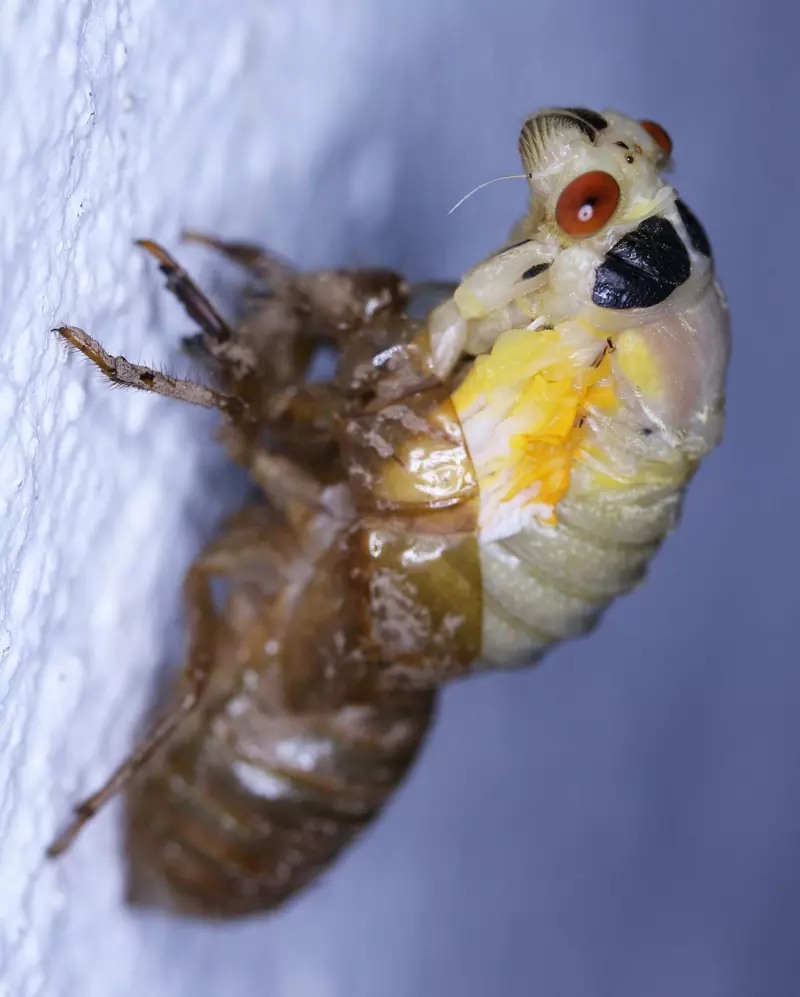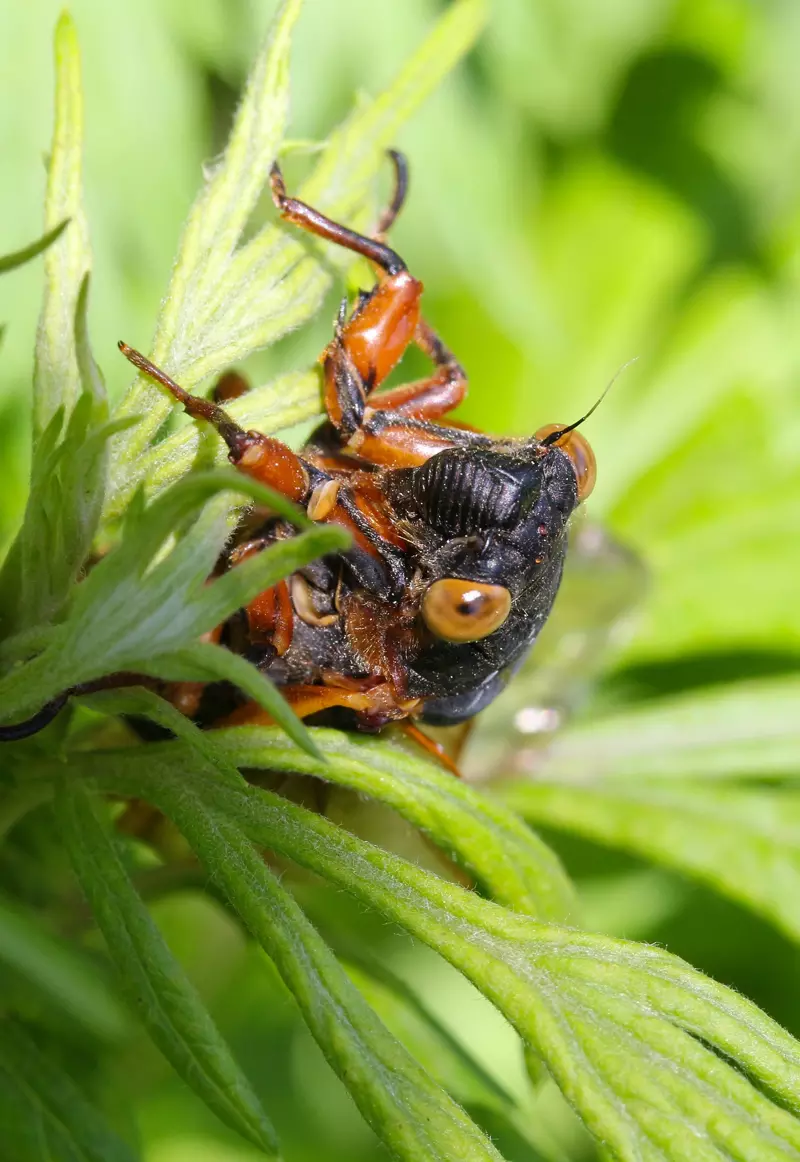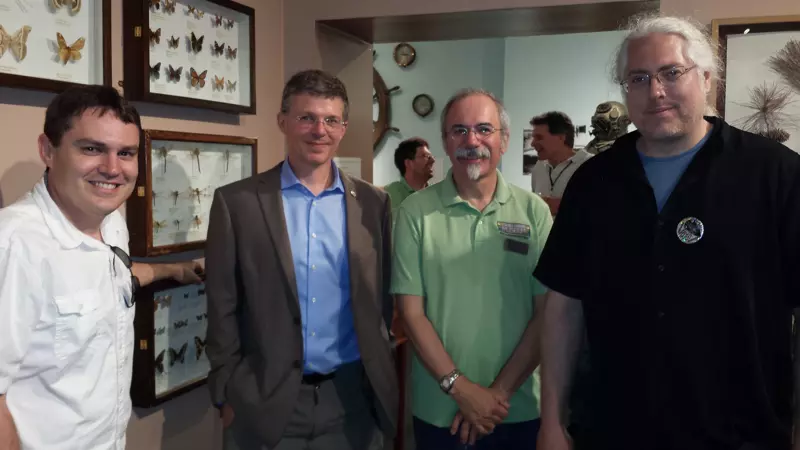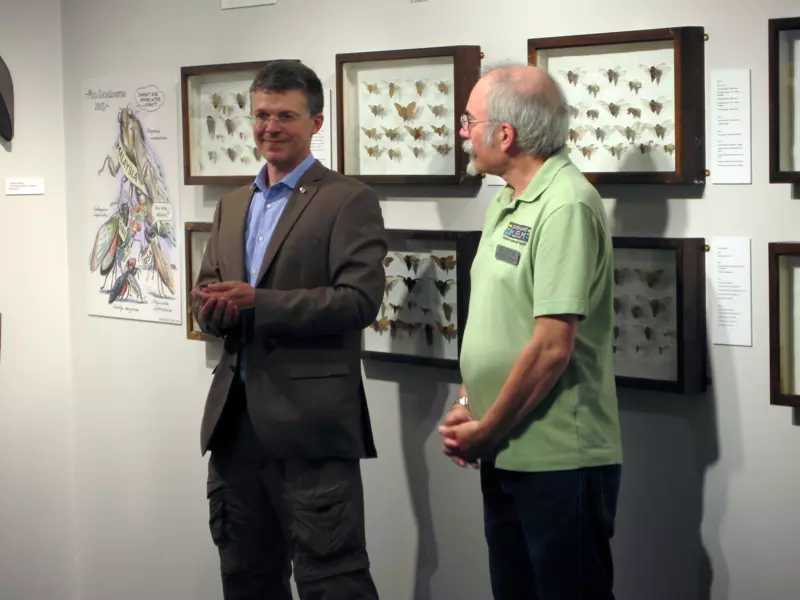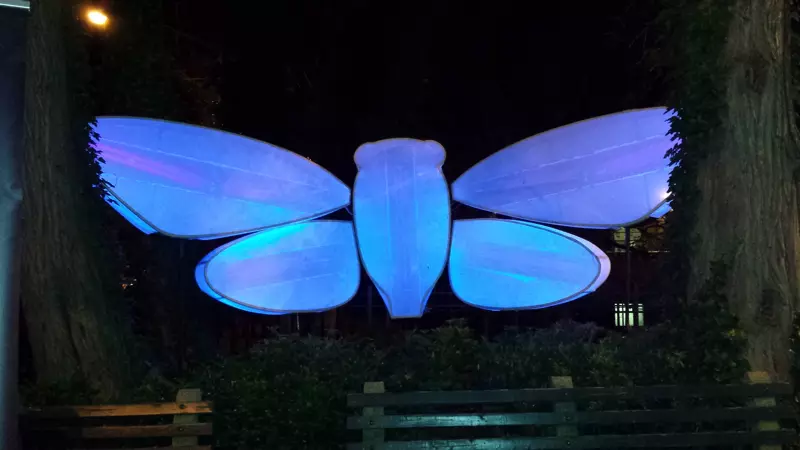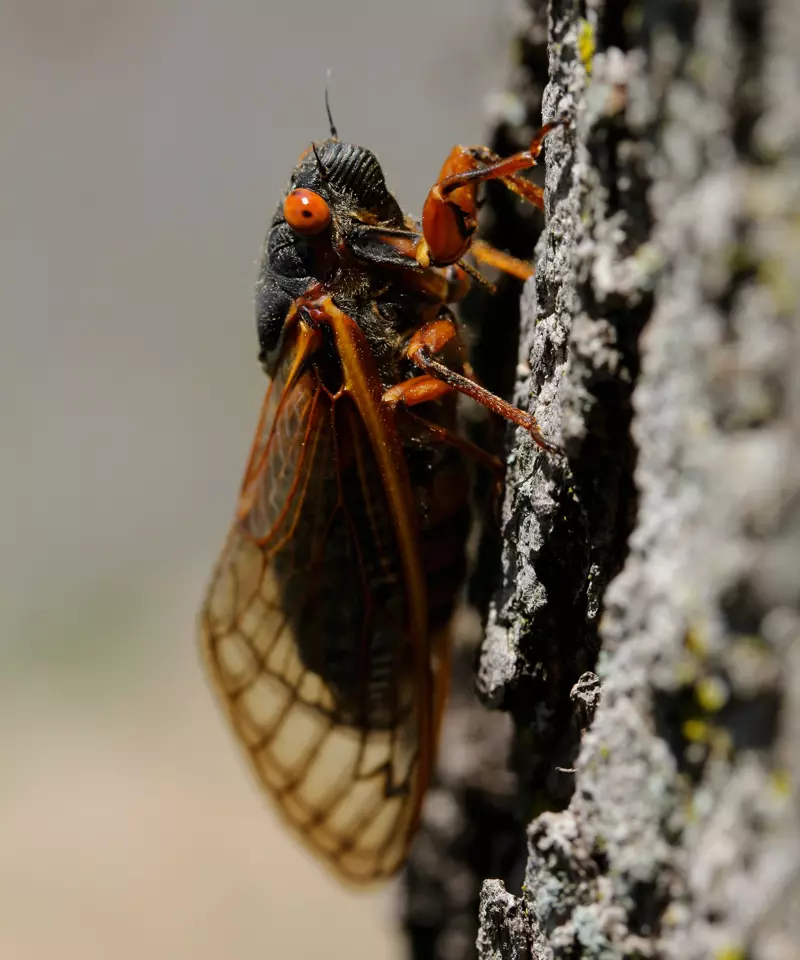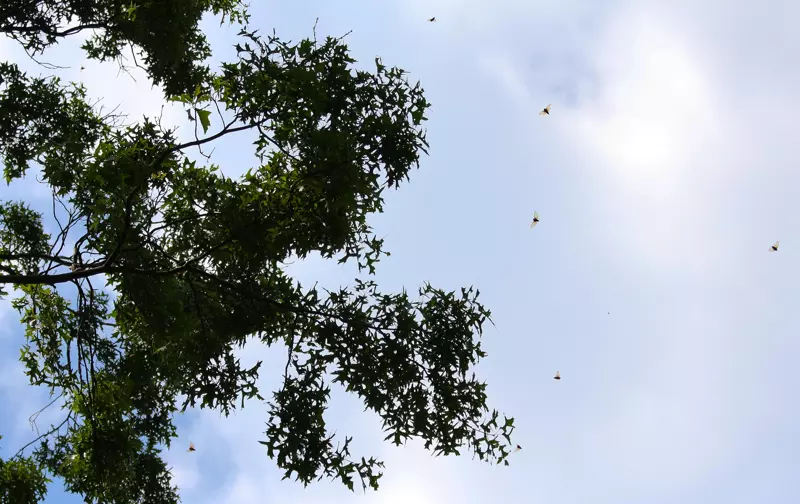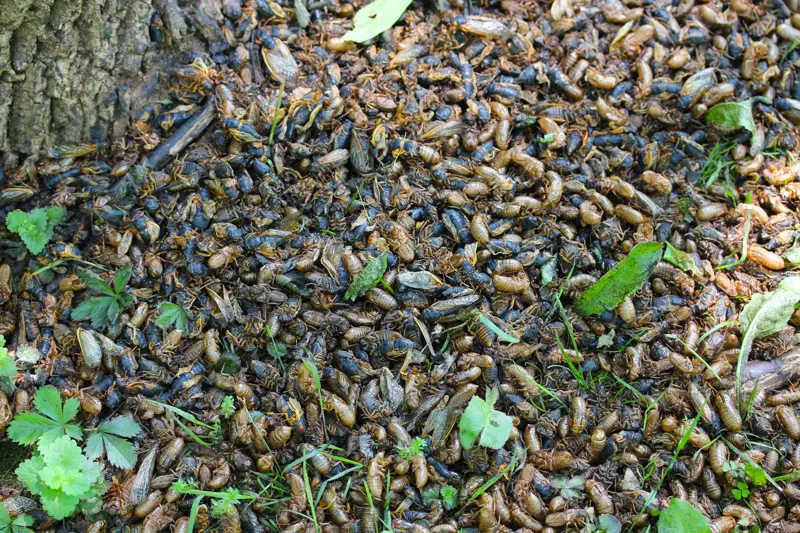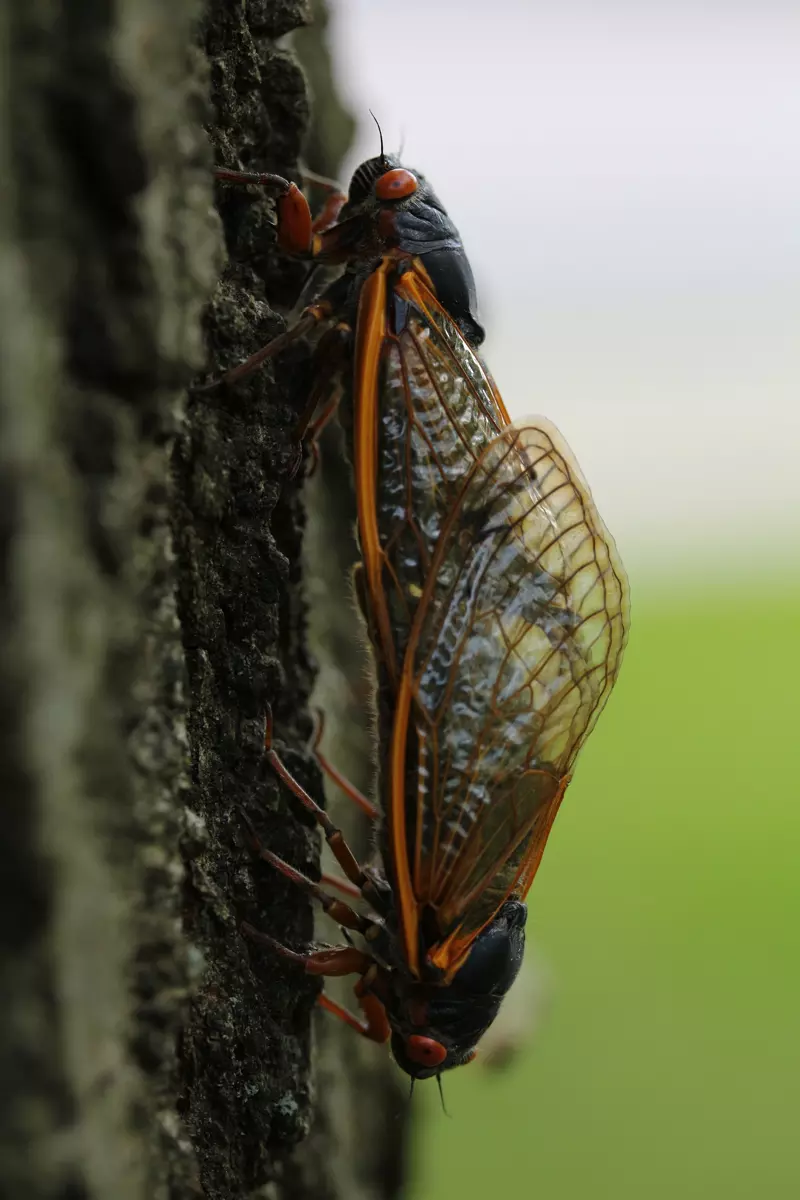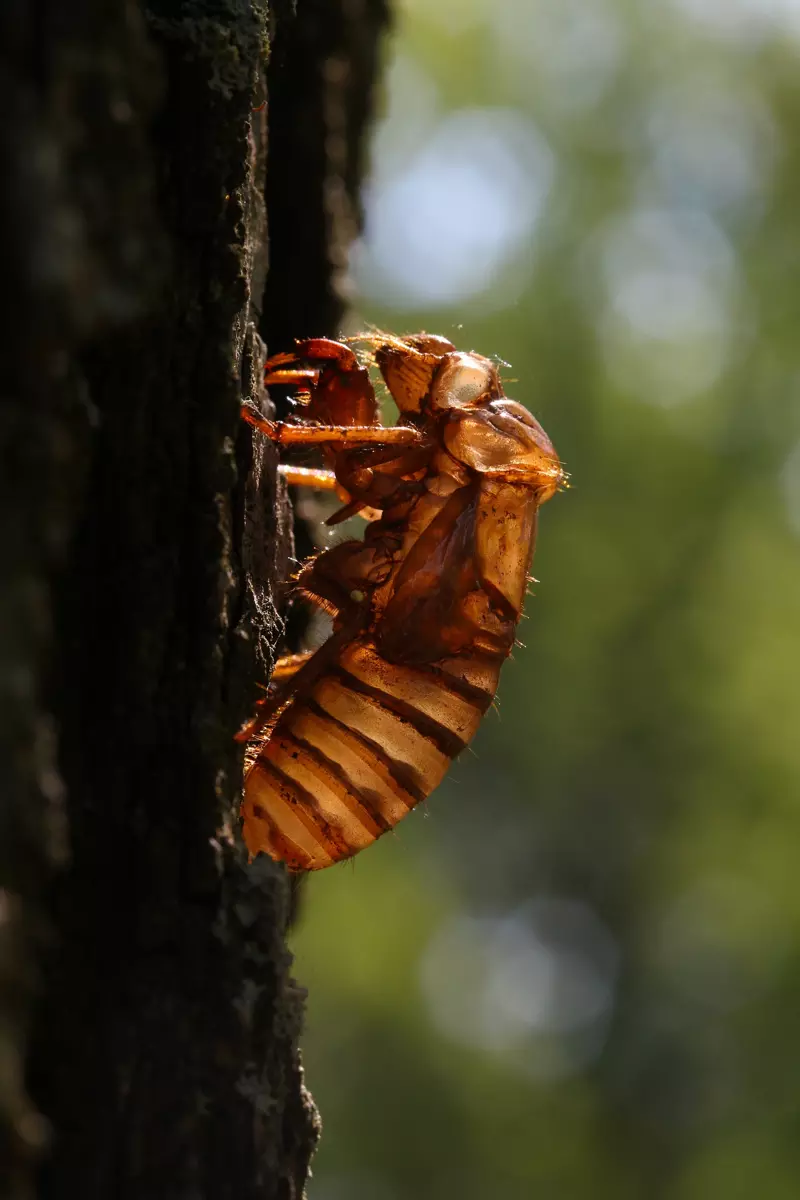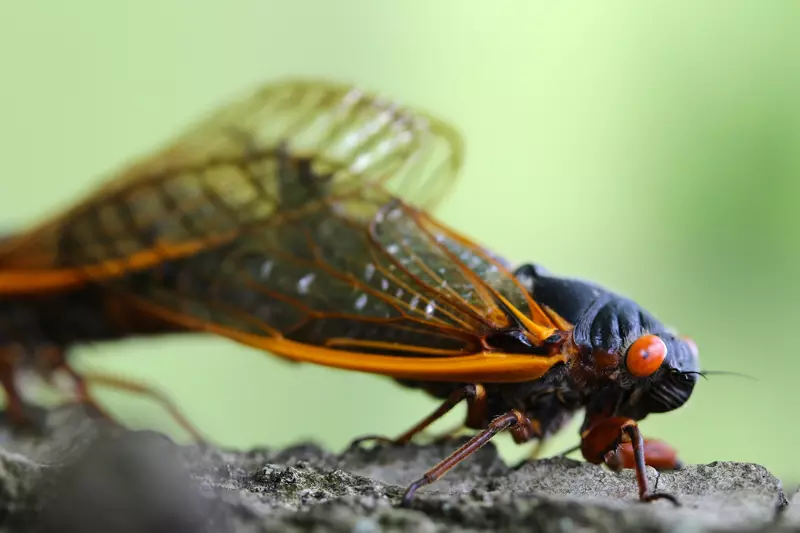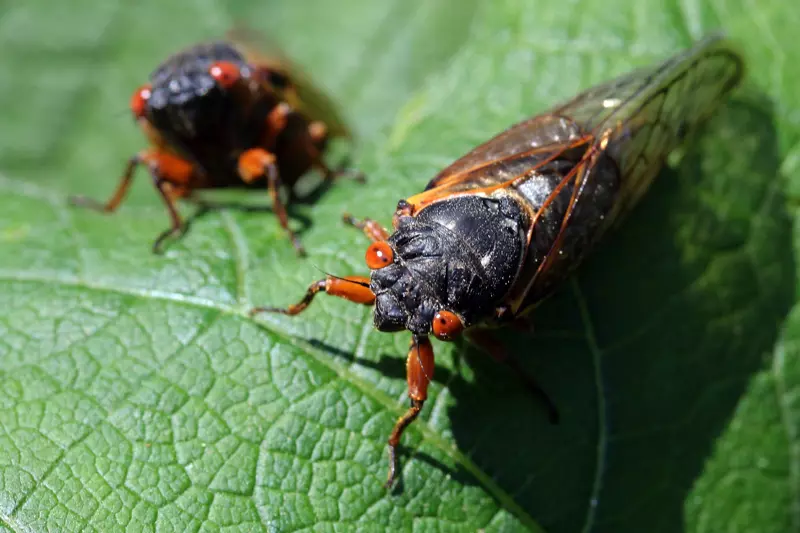Periodical cicada Brood XIV (14) will emerge in the spring of 2025 in Georgia, Kentucky, Indiana, Massachusetts, Maryland, North Carolina, New Jersey, New York, Ohio, Pennsylvania, Tennessee, Virginia, West Virginia. The last time this brood emerged was in 2008.
What, when, where:
What:
- Millions of these:
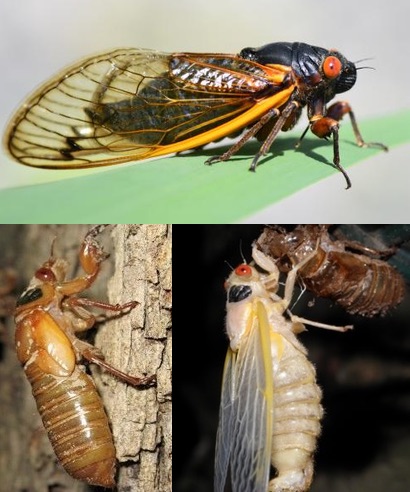
- Cicada insects with a 17-year life cycle.
- Some people call them “locusts” but they’re really cicadas.
- Which species: All three 17-year species, Magicicada septendecim, Magicicada cassini and Magicicada septendecula. How to tell the difference between the species.
- NOT the green ones that arrive annually.
When: Typically beginning in mid-May and ending in late June. These cicadas will begin to emerge approximately when the soil 8″ beneath the ground reaches 64 degrees Fahrenheit. A nice, warm rain will often trigger an emergence.
Other tips: these cicadas will emerge after the trees have grown leaves, and, by my own observation, around the same time Iris flowers bloom.
Where:
- Georgia counties: Fannin, Lumpkin, Rabun, Union
- Indiana counties: Crawford, Harrison, Perry
- Kentucky counties: Adairville, Anderson, Barren, Bath, Bell, Bourbon, Boyd, Bracken, Campbell, Carter, Clinton, Edmonson, Fayette, Franklin, Floyd, Gallatin, Grant, Hardin, Harrison, Henderson, LaRue, Laurel, Leslie, Madison, Montgomery, Nelson, Nicholas, Pendleton, Pulaski, Rowan, Scott, Shelby, Whitley
- Kentucky cities: Bowling Green, Corbin, Flemingsburg, Frankfort, Greensburg, Hazard, Radcliff, Richmond
- Massachusetts counties: Barnstable, Plymouth
- Maryland counties: Allegany, Washington
- New Jersey counties: Atlantic, Camden, Ocean (NJ records are from older literature).
- New York counties: Nassau, Suffolk
- Ohio counties: Adams, Brown, Butler, Clermont, Clinton, Gallia, Hamilton, Highland, Ross, Warren
- Ohio cities: Batavia, Cincinnati area, Loveland
- North Carolina counties: Buncombe, Burke, Caldwell, Catawba, Henderson, McDowell, Mitchell, Wilkes
- North Carolina cities: Asheville, Moravian Falls, north-west of Nashville, Wilkesboro
- Pennsylvania counties: Adams, Berks, Blair, Cambria, Centre, Clearfield, Clinton, Cumberland, Huntingdon, Lackawanna, Luzerne, Lycoming, Mifflin, Montour, Northumberland, Snyder, Union
- Pennsylvania cities: Bear Gap
- Tennessee counties: Bledsoe, Blount, Campbell, Cheatham, Claiborne, Cocke, Coffee, Cumberland, Davidson, Grainger, Grundy, Hancock, Hawkins, Jefferson, Marion, Roane, Robertson, Rutherford, Sevier, Sumner, Williamson
- Tennessee cities: Cades Cove, Muddy Pond,
- Virginia counties: Botetourt, Lee, Russell, Scott, Smyth, Tazewell, Wise
- West Virginia counties: Cabell, Kanawha, Mason, Mingo, Putnam, Wyoming
- West Virginia cities: Huntington
More Location Tips:
- Cicadas @ UCONN has the most up to date maps.
- County data is from the Cicada Central Periodical Cicada Record Database. Cities come from May 2008 reports and June 2008 reports.
- Not sure? Ask someone in your community who lived there 17 years ago.
- At the time of the emergence, use the Cicada Safari app to see where they are emerging.
More facts and fun:
- Use the correct image and the correct language when talking about these cicadas. Here’s some images you can share.
- Use the Periodical Cicada Emergence Checklist for the Maximum Magicicada Experience.
- All cicada questions that are frequently asked.
- A video to help you tell the difference between the species.
- The 17 Most Interesting Periodical cicada facts.
- Cicada Mania Crossword Puzzle. It isn’t easy.
1907 Map Marlatt, C.L.. 1907. The periodical cicada. Washington, D.C. : U.S. Dept. of Agriculture, Bureau of Entomology.
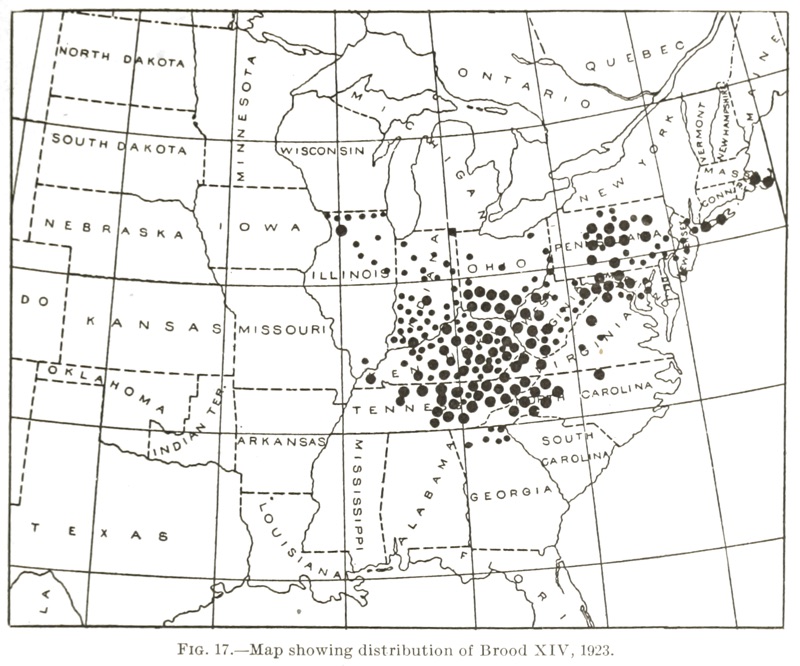
A more modern map made by Roy Troutman:
